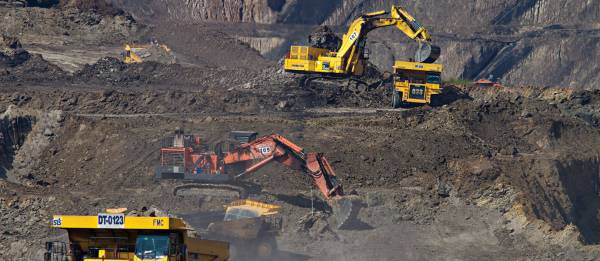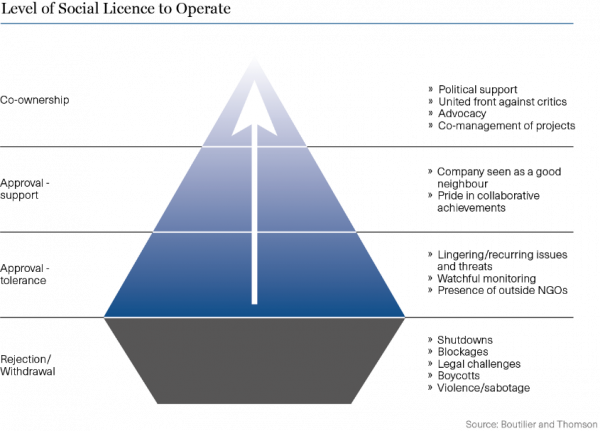PODCAST
Ep3: Collective Decision Making and the Future of Whānau
Marama Royal on iwi governance and achieving positive outcomes for whānau.
‘Social licence’ is much more than a turn of phrase. It has substance and a role in Te Tiriti and co-governance.

“Social licence to operate (SLO)” is an important, often high-profile topic that boards need to pay attention to. However, it is an ill-defined concept and can mean different things to different people. Its link to co-governance is also seldom understood.
The term was coined around 1996 by an executive of Placer Dome, a Canadian mining company, and not by activists as many assume. It followed a disaster at their Marcopper mine in the Philippines, when millions of tonnes of mining waste spilled into the Boac River, destroying the region’s water supply.
This, with other factors, prompted a shift by the Philippines government to a stricter regulatory regime. The executive described SLO as a new industry challenge.
Usage quickly spread, connected mainly to the idea of the ‘social risks’ around potentially losing public favour.
The idea of there being more to conforming to society’s requirements than simple legal compliance has a wider context, of course. A 2017 Canadian review of social licence within the context of public administration (Gehman et al) concluded that social licence has long played a vital function in society “whereby social norms can precede and supersede legal rules”.
In other words, sometimes social licence may lead to new law, and sometimes it might demonstrate when the “law is an ass”. There are echoes of Rousseau’s social contract and the sovereignty of the people to legislate, too.

Gehman et al noted that the use of the term was exploding. From 1997 to 2002 it had been mentioned in less than 10 new media articles per year, but the number jumped to over 1,000 from 2013 to 2015, and to more than 2,000 in 2016.
I’m sure that growth has continued since. On the other hand, they concluded that the concept “has so far had only tenuous scholarly footing”.
In an early attempt to “provide the term with substance” as Gehman et al described it, Joyce and Thomson (2000) listed “social risks” facing mining companies in Latin America, noting that, at the project level, those risks threatened “social acceptability” by posing “problems of legitimacy”.
They also surveyed the use of the term, finding that “. . . scholars have concluded that the concept of social licence to operate initially emerged as little more than a memorable turn of phrase”.
They revisited the concept in 2008, describing three normative components:
Work has continued on providing the term “with substance”, with various models developed, including the three strand model and the triangle model. The model that seems to be used by organisations the most – and the one I find most useful – is the pyramid model.

As just two of many examples, the model has been adopted by the Australian Centre for Corporate Social Responsibility and also adapted by Ngāti Porou Fisheries in developing its Land-Based Aquaculture Assessment Framework.
“. . . scholars have concluded that the concept of social licence to operate initially emerged as little more than a memorable turn of phrase.”
Gehman et al argued that governance models have changed along with the emergence of the social licence concept: “The emergence of social licence mirrors a broader trend towards ‘networked governance’, or a shift from traditional hierarchal and centralised governance to a more horizontal mode . . . democratic accountability derives as much from judgments of the target population of policy initiatives, as much from officials acting as the final decision makers” (shades of DAOs, discussed in my 6 April article “Australia to legalise DAOs”).
Ruckstuhl et al (2014) pointed to “the prevalence of global communication technologies” and the international expectations to gain indigenous peoples’ “free, prior and informed consent” that emerged from the 2007 UN Declaration on the Rights of Indigenous Peoples.
In reference to the successful opposition by Te Whānau-a-Apanui to Petrobras’ plans to drill for oil, they noted that: “A social licence has to be considered in the context of the Treaty of Waitangi . . . social licence will be granted only when it goes beyond regarding iwi as ‘stakeholders’, which limits the indigenous Māori voice to an aggregated ‘social’ voice and masks the specific history and experience of Māori. Instead, we suggest that the Treaty-based partnership approach . . . has much to offer as a process for engaging in meaningful dialogue with Māori communities to assess the impacts of mining within a context of shifting social expectations and concerns about resource exploitation.”
Inject this thinking into the pyramid model and its plain that, first, social licence remains ill-defined, and second, it certainly makes no sense in Aotearoa without reference to Te Tiriti.
Baden Vertongen, in a defence of co-governance in Law News (May 2022), argued that: “Our constitutional beginnings are about how different governance concepts are to be balanced, intertwined, reconciled here in Aotearoa. Talking about co-governance is at the core of our constitutional whakapapa.”
Perhaps the pyramid model would be improved with “co-governance” added below and overlapping with co-ownership?
“The emergence of social licence mirrors a broader trend towards ‘networked governance’, or a shift from traditional hierarchal and centralised governance to a more horizontal mode . . .”
“Social licence” isn’t a synonym for “permission”. Any discussion of social licence could just as easily lead to considering other levels of the pyramid, including co-governance and even co-ownership.
As Vertongen agreed, “free inquiry, reason and the persuasion of others is fundamentally important in any discussion of co-governance”, and this applies equally to any discussion of social licence in general.